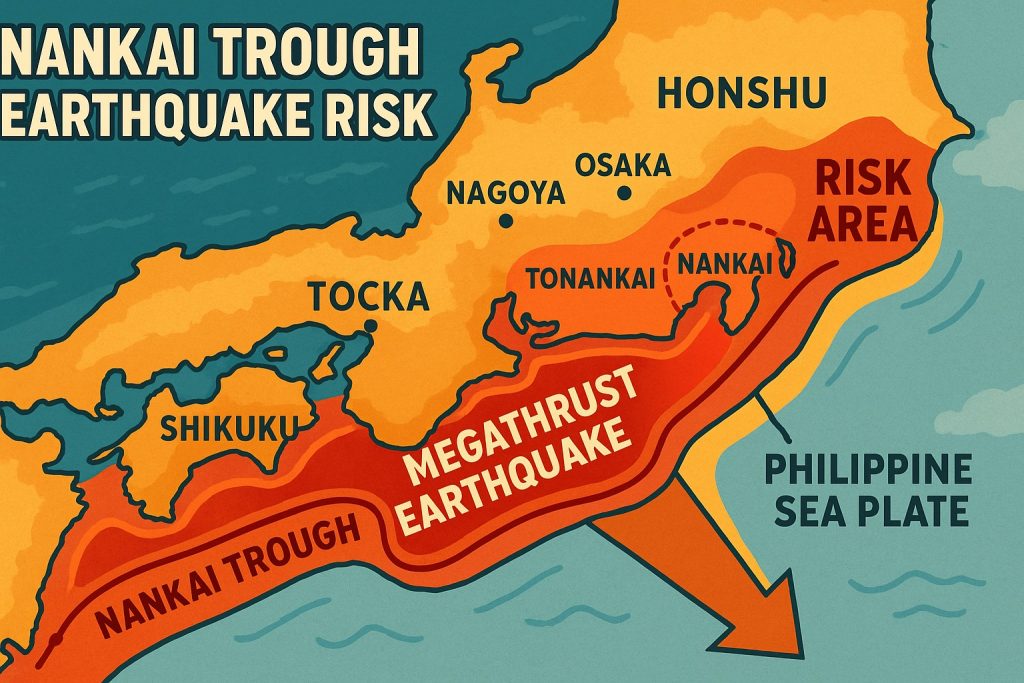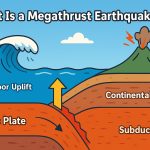Russian geophysicist Alexey A. Lyubushin has developed a novel method to evaluate long-term seismic hazards using multifractal analysis of continuous low-frequency microseismic noise. His work is especially relevant for Japan — one of the world’s most seismically active regions. Among his key concerns is the growing risk of a megathrust earthquake along the Nankai Trough, a known subduction zone south of Honshu.
How Lyubushin’s Method Works
Lyubushin analyzes long-term data from Japan’s F-net seismic network, looking for changes in:
- Noise variance width
- Predictability indices
- Spatial synchronization of microseisms
From 1997 to 2011, his findings showed a clear trend toward synchronization, a possible early warning signal of critical stress accumulation in the tectonic system.
Rising Risk of a Nankai Megathrust Earthquake
The Nankai Trough — stretching from the Tokai region to Kyushu — is one of the most closely watched fault systems on Earth. It has a historical pattern of massive quakes every 90–150 years, and segments often rupture in pairs (Tokai + Tonankai or Tonankai + Nankai) within a short span.
According to Lyubushin:
- By mid‑2010, the Japanese seismic system showed statistical signs of entering a “critical state.”
- He believes this is particularly alarming for the Nankai Trough, where tectonic compression has been increasing steadily.
- His probabilistic forecast suggests a very high likelihood of a megathrust earthquake (M8–9+) occurring in the next few years, potentially affecting central to southern Japan.
This aligns with Japanese government estimates, which predict up to 320,000 casualties and massive infrastructural damage in the event of a Nankai rupture.
What Makes the Nankai Trough So Dangerous?
- It marks the convergent boundary between the Philippine Sea Plate and the Eurasian Plate.
- The entire region is densely populated, with megacities like Osaka, Nagoya, and Tokyo in the hazard zone.
- Past events (e.g., 1944 Tonankai M8.1, 1946 Nankai M8.4) support the recurrence theory.
- The slow-slip events recently observed in the Tokai area may be early warning indicators.
Can We Be Ready?
Lyubushin’s method doesn’t predict an exact date — but it sharpens our understanding of when tectonic conditions become highly unstable. Japan is actively:
- Updating early warning systems,
- Preparing tsunami evacuation infrastructure,
- Reinforcing buildings and critical lifelines,
- Conducting nationwide drills for the “Nankai Trough Emergency Plan”.
Glossary
- Nankai Trough: A subduction zone south of Japan, prone to megathrust quakes.
- Megathrust Earthquake: A powerful earthquake occurring at subduction zones, often above M8.
- Microseismic noise: Background seismic vibrations used for long-term monitoring.
- Multifractal analysis: A statistical method analyzing complex, scale-variable structures.
- Slow-slip event: A gradual fault movement that can signal stress buildup.



This is the kind of writing that doesn’t just sit on the page — it makes you feel something deep inside.